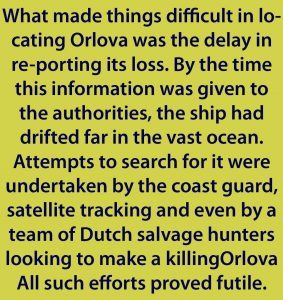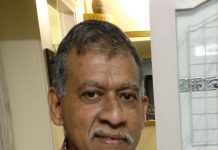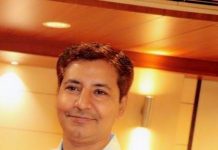 Breaking news: “A 1,400-tonne ghost ship drifting out at sea without a crew, infested with disease-ridden cannibal rats, is on a collision course with the UK shore!” Your natural reaction, “Hah! Who’d believe this in these technologically advanced day and age. It’s certainly fake news.”
Breaking news: “A 1,400-tonne ghost ship drifting out at sea without a crew, infested with disease-ridden cannibal rats, is on a collision course with the UK shore!” Your natural reaction, “Hah! Who’d believe this in these technologically advanced day and age. It’s certainly fake news.”
Eerily, it is not. The cannibal rats maybe fake news, but not its collision course with the UK shore.
The ship in question is the 100-meter-long MV LyubovOrlova. This derelict ocean liner has been adrift without a crew since February 2013. It happened when it was being towed to the Dominican Republic to be scrapped and the towline broke. Once free, it drifted far and disappeared before any action could be taken to retrieve it.

However, Orlova is not the only isolated case of a ship drifting away without a crew and getting lost in the ocean. A fishing boat that was hit by Tsunami in 2011 on the Japanese coast, ended up off the western US coast. The US Navy used it for target practice and scuttled it. However, one of the most mysterious cases is that of SS Baychimo, a steel-hulled 1,322-tonne Swedish cargo steamer that operated along the coast of north Canada and Alaska. It was abandoned in 1931 for reasons unknown and has been adrift in the waters since then. It has been sighted a number of times, the last being in 1969. What’s more is, it was even boarded several times, but due to lack of equipment or bad weather could not be towed away.The disappearance is more common among sailboats, as they are reported to regularly drift out at sea without crew. One such sailboat, that still intrigues the authorities and public alike, is the Bel Amica, discovered off the coast of the Mediterranean island of Sardinia near Punta Volpe on August 24, 2006 by the Italian coast guard. It had half eaten meals on board, but not a soul could be found on it – dead or alive!
Orlova, by comparison, is a huge ship. Had it been a small ship, its disappearance may have sounded credible, but this is a 100-meter-long expedition cruise ship that could carry 180 people. It had an onboard restaurant, a gym and much more, and was basically used to ferry tourists on polar trips. What’s more? This ship that is believed to be rocking in the rough seas without anyone to steer it and even without a tracking beacon, is worth a million dollars. The good news is if you find it, it is yours to keep. According to the law of the sea, finders keepers!
The question remains, how can such a large ship get lost in the ocean with global surveillance systems and other modern technologies in place? The truth is that technology has its limitations. Although the software used by the coastguard to search for it did give an indication about it drifting towards Europe. Due to the prevailing ocean currents, spotting it in the vast ocean is near impossible.Despite advancements in satellite and other technologies, spotting a single ship in the vast ocean is near impossible. Till date the following attempts have already been made:
- Physical search of the ocean: Physical search has been undertaken a number of times with the help of ships and planes. These attempts have failed since Orlova drifted away a long time ago and no one knows where to look for it. With each passing day the area of search grows bigger making the search difficult.
- Satellite search: If you think the pictures taken by satellites orbiting the Earth would show this ship drifting on the ocean waves, you cannot be more wrong! The reason being absence of information on the area to search, making it impossible for satellites to pinpoint and focus and it is practically impossible to map the whole ocean. Also the low resolution of satellite cameras cannot make a ship visible in the huge ocean.
- Radar satellites: The latest in satellite technology is the radar and automatic identification system (AIS) satellites, currently being used by the Irish coastguard. This technology combs the sea surface in great swathes using the radar satellites that show ships as blips on the radar screen. This data is cross-checked with AIS satellite maps to pinpoint the location of all active ships on the ocean. By this method, it is not possible to spot Orlova, since the radar blip will be switched off.
As of now, spotting Orlova seems impossible in the absence of better ways to track the ship. One ray of hope is C-SIGMA that stands for ‘Collaboration in Space for International Global Maritime Awareness’. This is an international initiative that encourages wider cooperation and exchange of maritime surveillance information at global level. Such information exchanges may result in spotting the Orlova.

Is MV LyubovOrlova still out there, drifting aimlessly, posing danger to passing ships and becoming a threat to oil rigs? When will it, if it ever does, hit the European coastline since according to last reports the prevailing currents are carrying it towards Scandinavia or Ireland? Or has it possibly sunk to the bottom of the sea?
These questions remain, while the authorities frantically search for answers.
































